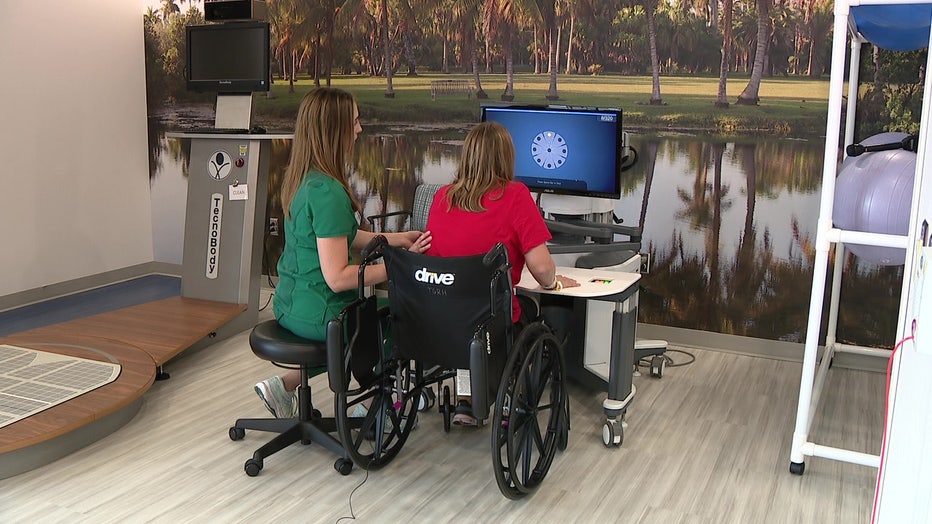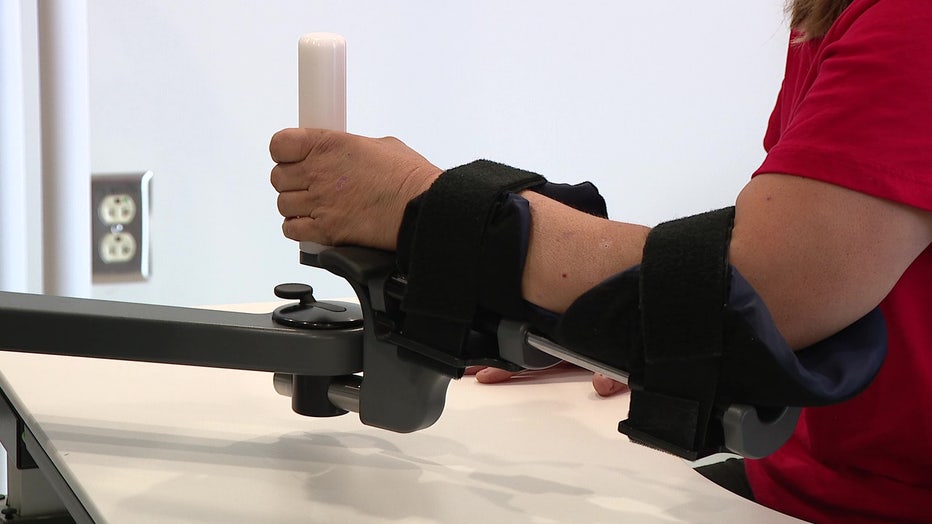Tampa General uses artificial intelligence to help stroke patients regain range of motion

Stroke rehab with a robot at TGH
A robot device is using artificial intelligence to help stroke patients regain arm motion at Tampa General Rehabilitation Hospital.�
TAMPA, Fla. - A robot device is using artificial intelligence to help stroke patients regain arm motion at Tampa General Rehabilitation Hospital.
It’s called the BIONIK’s InMotion arm/hand robotic device. It uses artificial intelligence to monitor a patient’s movements and range of motion while the patient plays computer games.

"The artificial intelligence is learning where the deficits are," said Samantha Rubio, an occupational therapist with TGH's Rehabilitation Hospital. "So it's learning how much reach does that patient have? How much coordination does that patient have? When they do reach, is it symmetrical? Is it precise?"
READ: Can heart failure risk show up on a smartwatch? It's possible, study says

The patient straps his or her arm into the device and then plays computer games, such as drawing a line between two dots.
"The research behind that device is the more repetitions we can get, the more neural pathways we can create," Rubio said.

Shannon Michelle Watkins, 42, suffered a stroke at the end of March and lost motion in her left arm.
"I can move it a little bit, but not as much as I used to," Watkins said. "But we’re working on that. We’re working to get better."

MORE: Heart disease risk could be affected by one surprising factor, new study finds
She told FOX 13 she enjoys rehabbing with the robotic device and hopes to return to her job at the traveling carnival soon.

"My goal is to do everything I used to do before. To walk out of here and have my life back," Watkins said.
"We’ve seen a lot of positive outcomes from this device. We have patients that come in that aren't using their arm at all, and they're able to, once they leave here, put on a shirt, feed themselves, brush their teeth: The little things in life we all take for granted," Rubio said.

